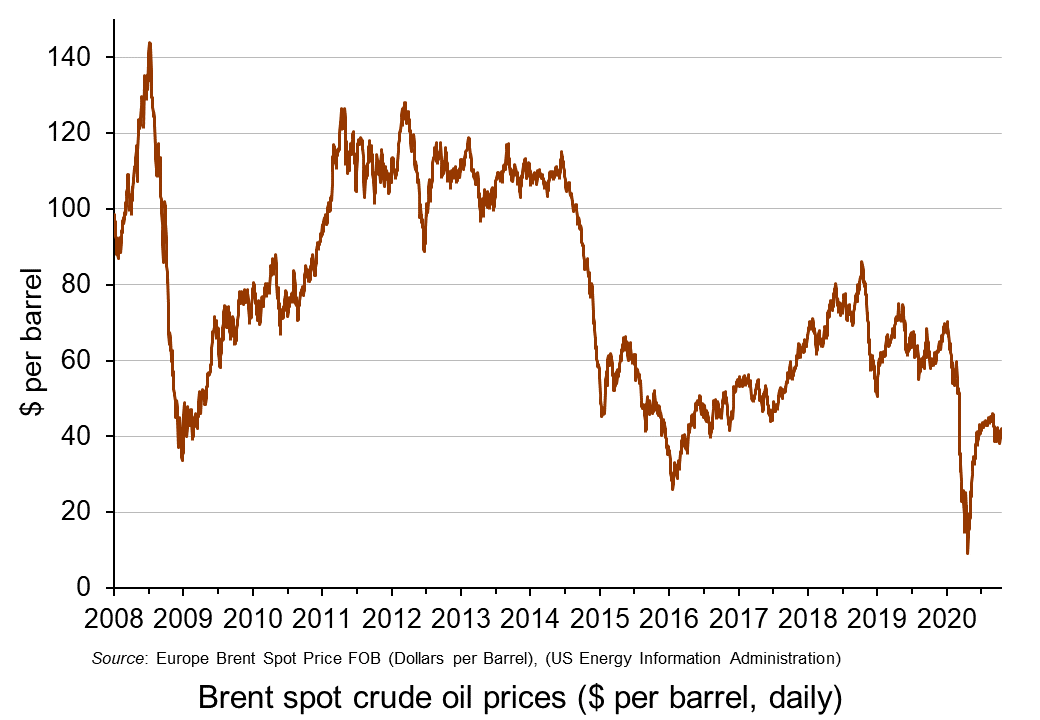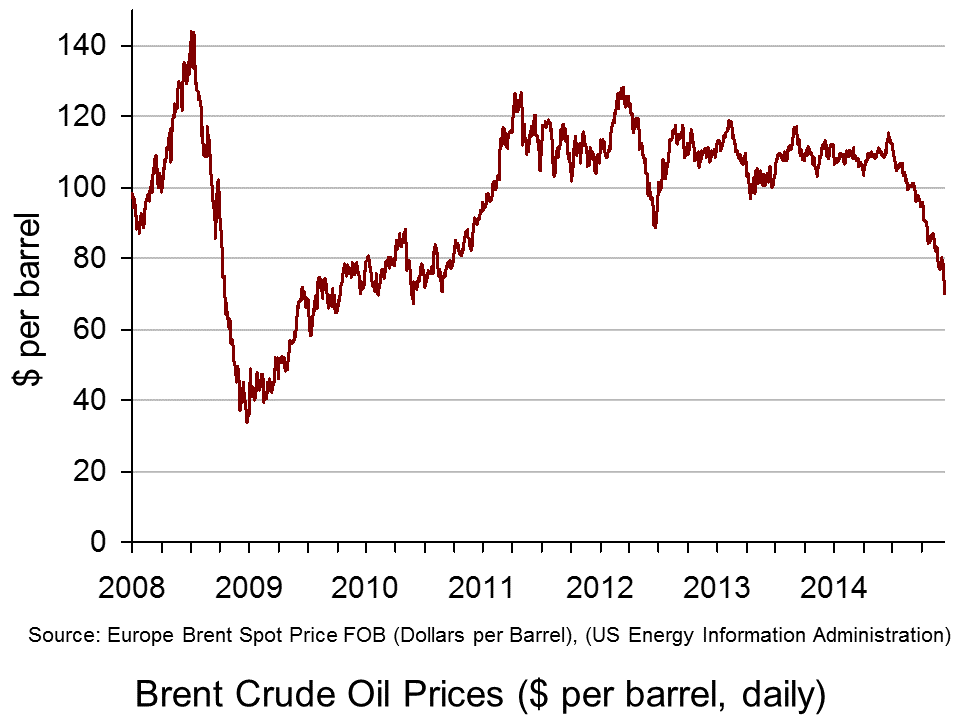 In its latest Commodity Special Feature (pages 43 to 53 of the October 2020 World Economic Outlook), the IMF examines the future of oil and other commodity prices. With the collapse in oil demand during the early stages of the coronavirus pandemic, oil prices plummeted. Brent crude fell from around $60 per barrel in late January to below $20 in April.
In its latest Commodity Special Feature (pages 43 to 53 of the October 2020 World Economic Outlook), the IMF examines the future of oil and other commodity prices. With the collapse in oil demand during the early stages of the coronavirus pandemic, oil prices plummeted. Brent crude fell from around $60 per barrel in late January to below $20 in April.
However, oil prices then rose somewhat and have typically been between $40 and $45 per barrel since June 2020 – still more than 35% lower than at the beginning of the year (see chart below: click here for a PowerPoint). This rise was caused by a slight recovery in demand but largely by supply reductions. These were the result partly of limits agreed by OPEC+ (OPEC, Russia and some other non-OPEC oil producing countries) and partly of reduced drilling in the USA and the closure of many shale oil wells which the lower prices had made unprofitable.
 The IMF considers the future for oil prices and concludes that prices will remain subdued. It forecasts that petroleum spot prices will average $47 per barrel in 2021, up only slightly from the $42 average it predicts for 2020.
The IMF considers the future for oil prices and concludes that prices will remain subdued. It forecasts that petroleum spot prices will average $47 per barrel in 2021, up only slightly from the $42 average it predicts for 2020.
On the supply side it predicts that ‘stronger oil production growth in several non-OPEC+ countries, a faster normalization of Libya’s oil production, and a breakdown of the OPEC+ agreement’ will push up supply and push down prices. Even if the OPEC+ agreement holds, the members are set to ease their production cut by nearly 25% at the start of 2021. This rise in supply will be offset to some extent by possibly ‘excessive cuts in oil and gas upstream investments and further bankruptcies in the energy sector’.
On the demand side, the speed of the recovery from the pandemic will be a major determinant. If the second wave is long-lasting and deep, with a vaccine available to all still some way off, oil demand could remain subdued for many months. This will be compounded by the accelerating shift to renewable energy and electric vehicles and by government policies to reduce CO2 emissions.
Report
- Special Feature: Commodity Market Developments and Forecasts (pdf file)
IMF World Economic Outlook (October 2020)
Articles
- IMF reveals 2021 forecasts for oil prices and the Middle East economy
- US energy stocks sink even as oil price steadies
- Oil prices drop for 4th day as COVID-19 second wave worries intensify
- Crude Oil Price Forecast: 2020, 2021 and Long Term to 2030
- OPEC+ Is On The Brink Of A Crisis
- Offshore Oil & Gas Poised For A Major Rebound
- Gloomy economic outlook due to COVID-19 crisis spells bad news for energy demand
- OPEC+ vows to stabilize oil market amid ‘material’ demand recovery slowdown
CNBC, Natasha Turak (19/10/20)
Financial Times, Chelsea Bruce-Lockhart (12/10/20)
Reuters, Sonali Paul (20/10/20)
Knoema (17/10/20)
OilPrice.com, Cyril Widdershoven (19/10/20)
OilPrice.com, Irina Slav (19/10/20)
Proactive Investors, Eithne Treanor (16/10/20)
S&P Global Platts, Eklavya Gupte, Charlotte Bucchioni and Gillian Carr (20/10/20)
Oil price data
- Oil price data from the US Energy Information Administration
Free data on the Economics Network site
Questions
- Describe a scenario in which oil prices rebound significantly over the coming months. Illustrate your answer with a supply and demand diagram.
- Describe a scenario in which oil prices fall over the coming months. Again, illustrate your answer with a supply and demand diagram.
- How are the price elasticities of demand and supply relevant to the size of any oil price change?
- Project forward 10 years and predict whether oil prices will be higher or lower than now. What are the major determinants of supply and demand in your prediction?
- What are oil futures? What determines oil future prices?
- How does speculation affect oil prices?



